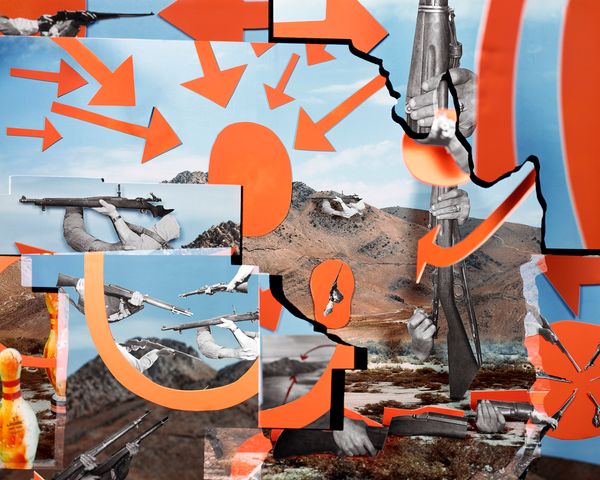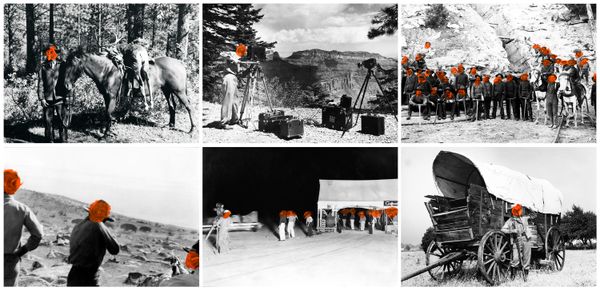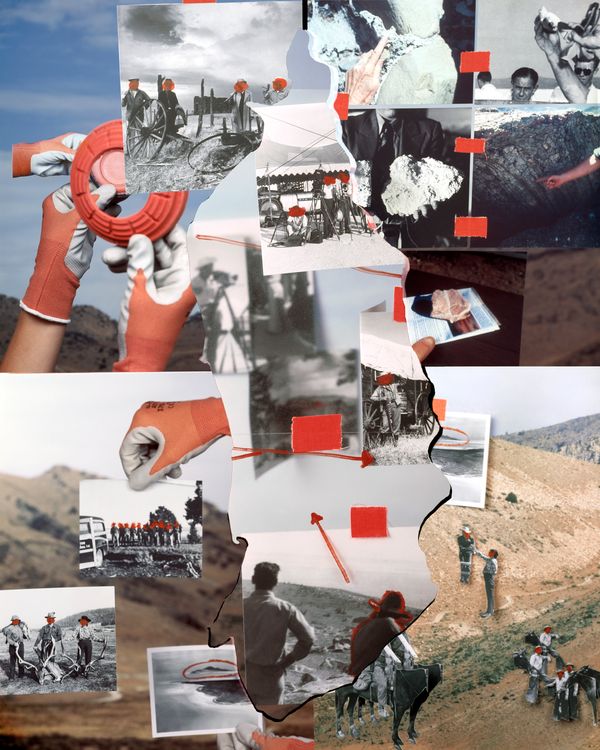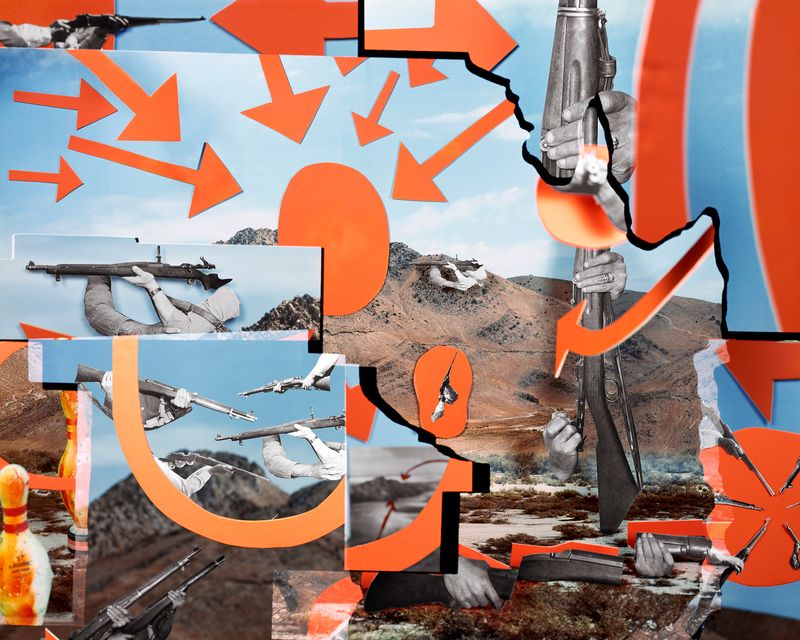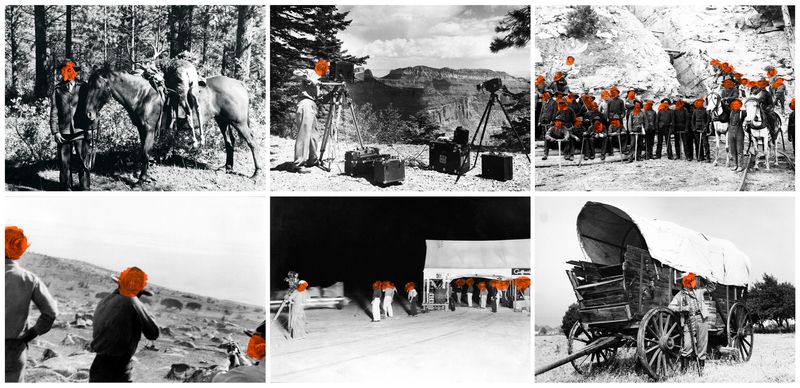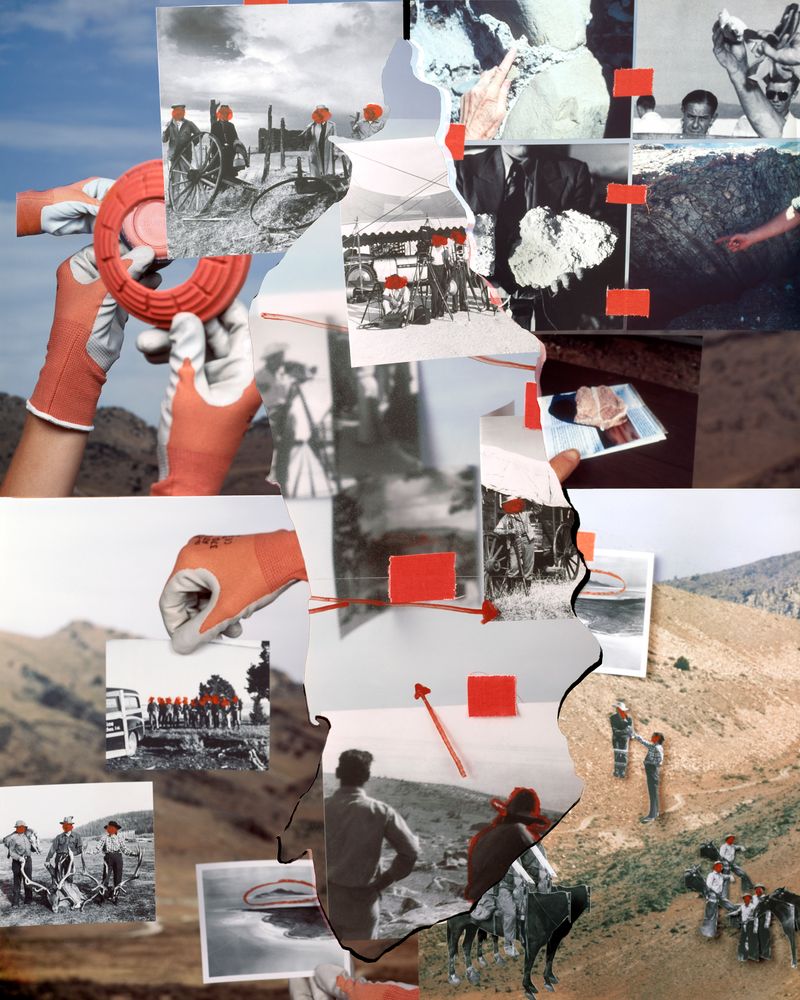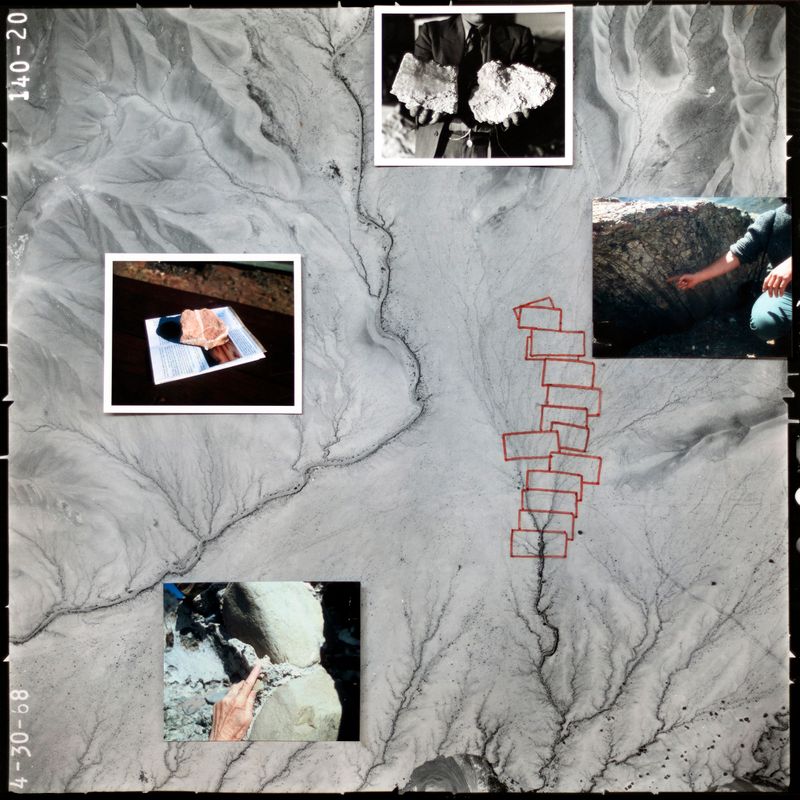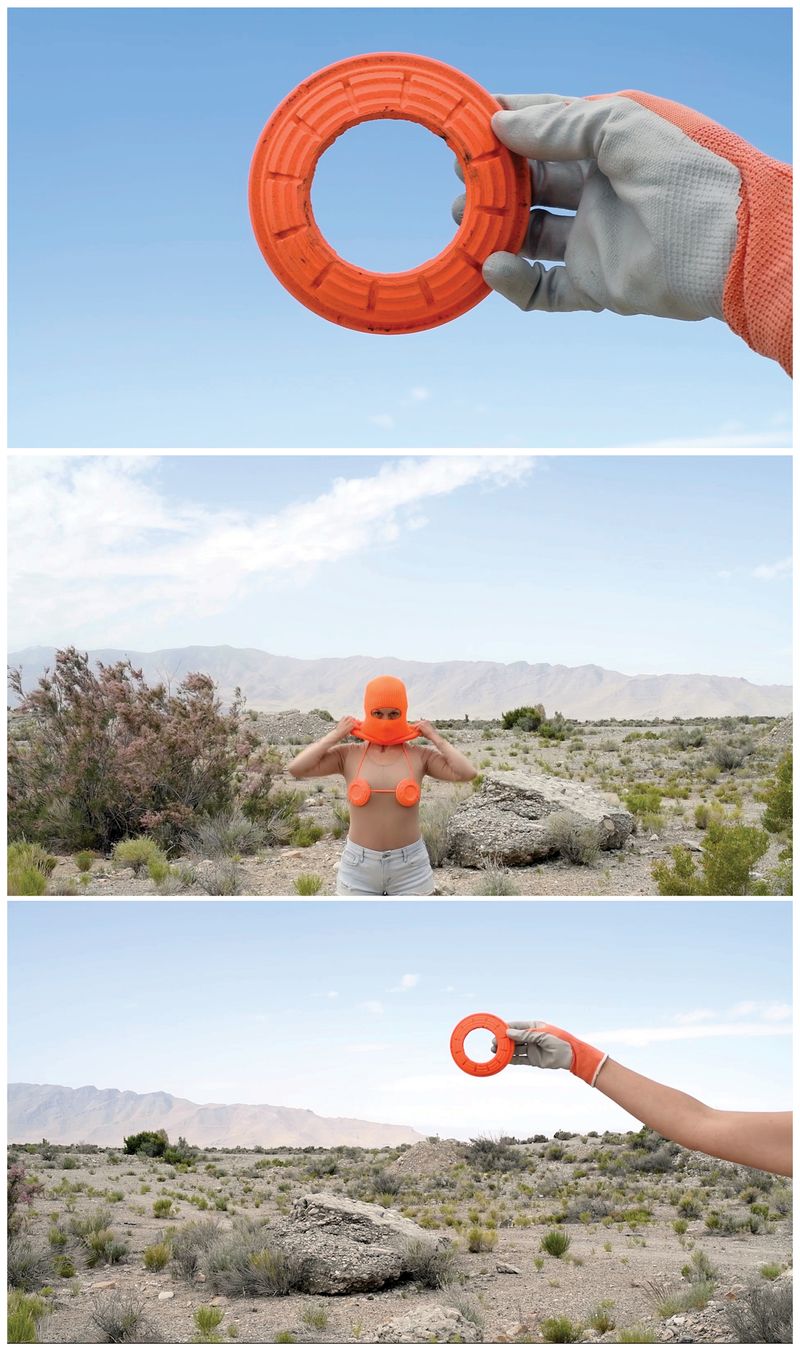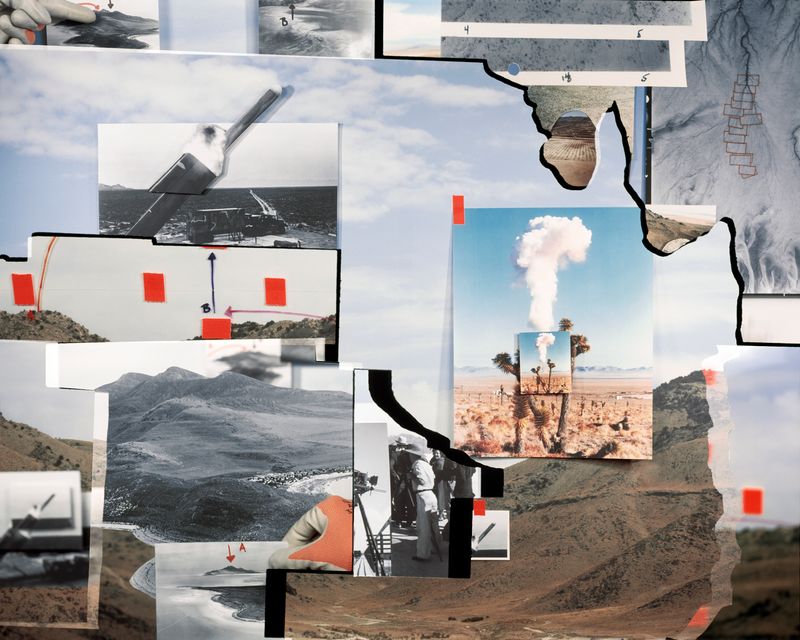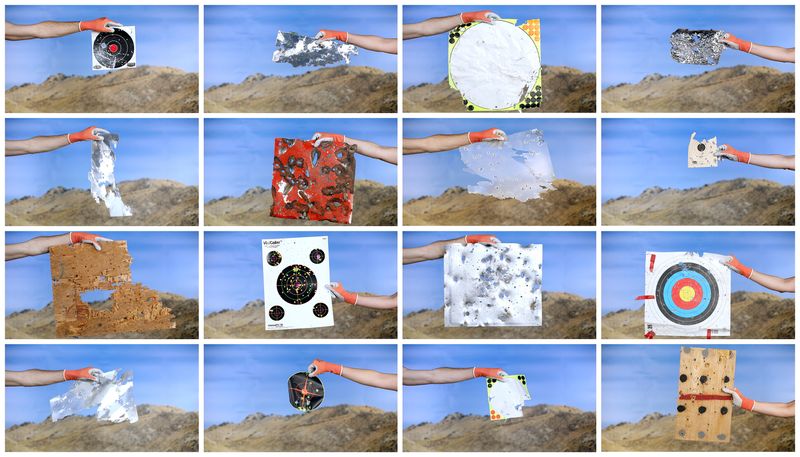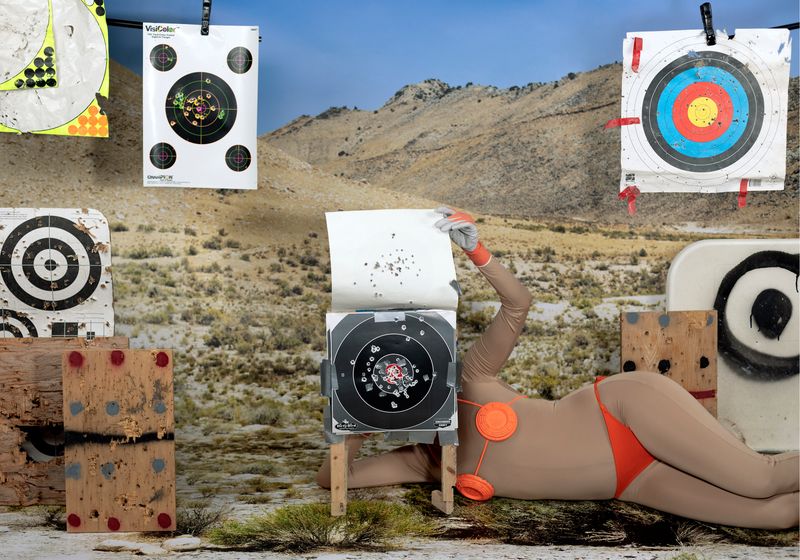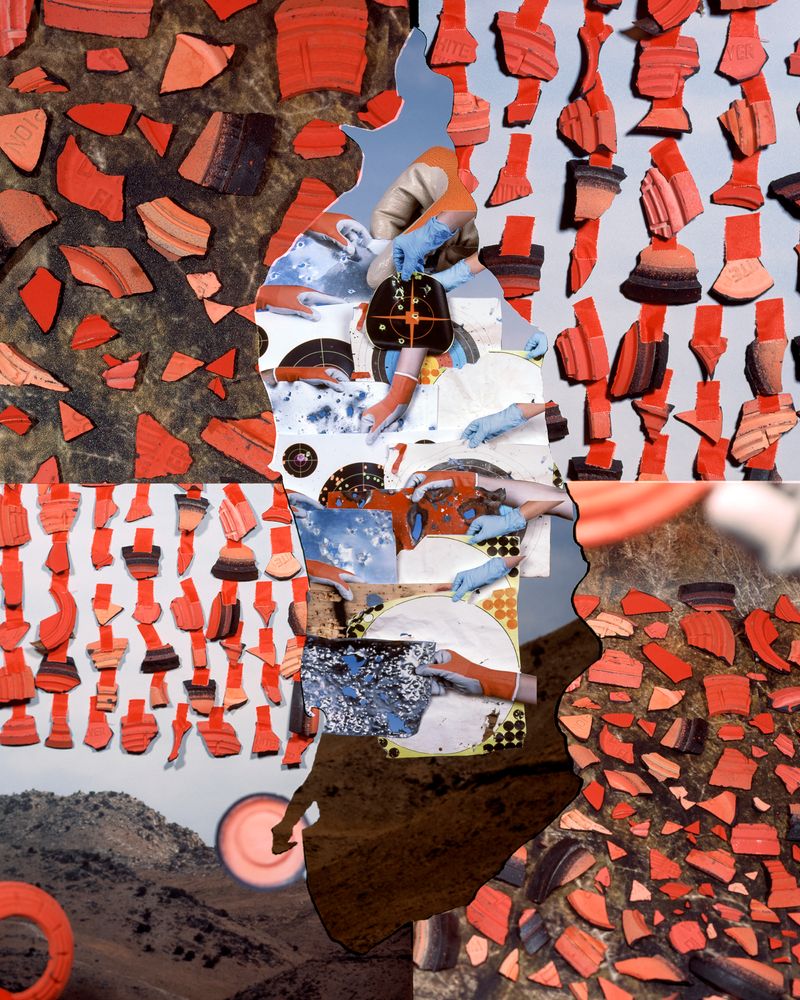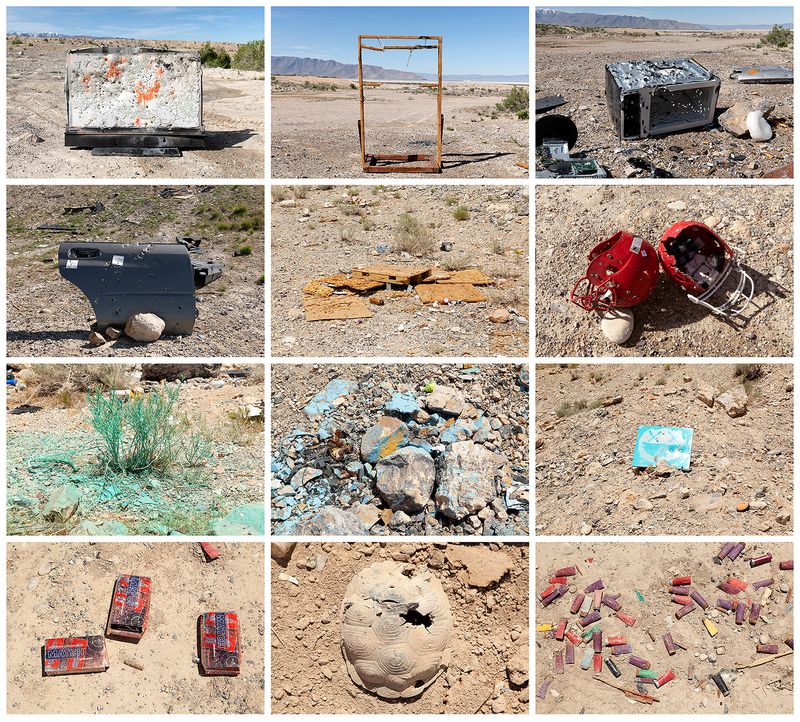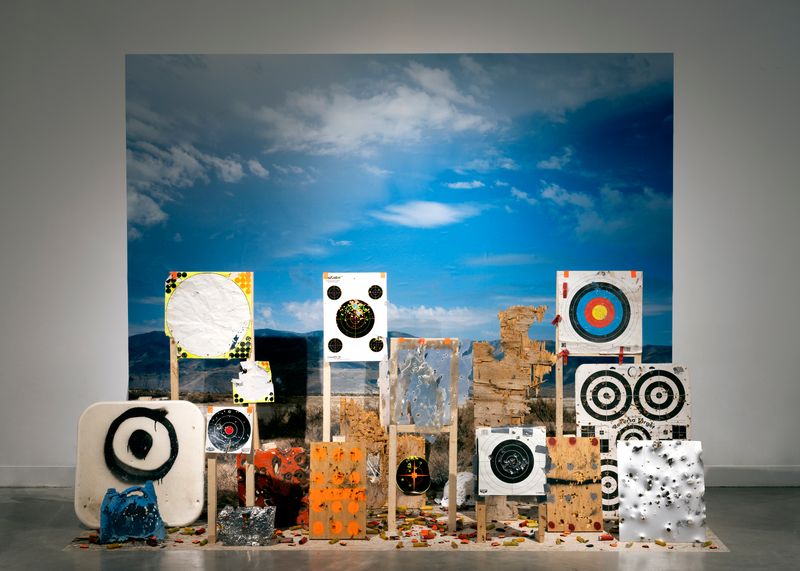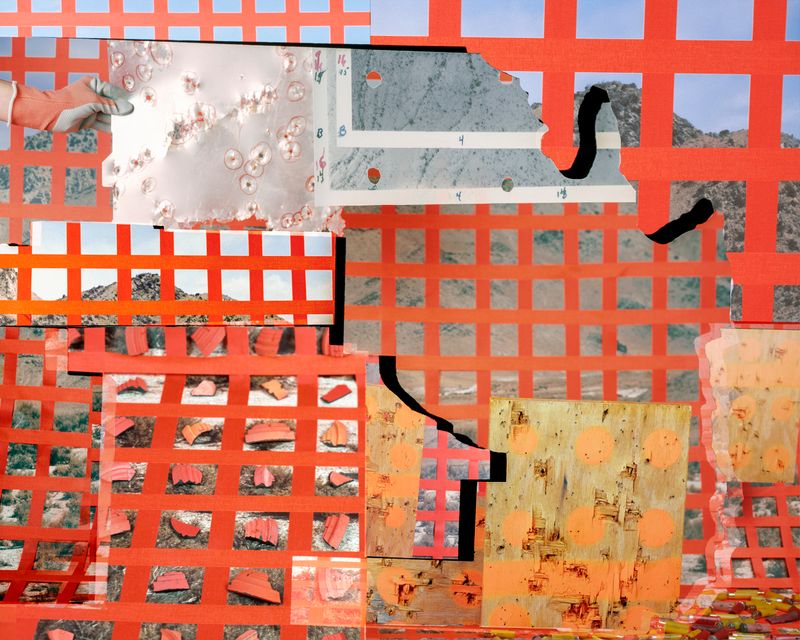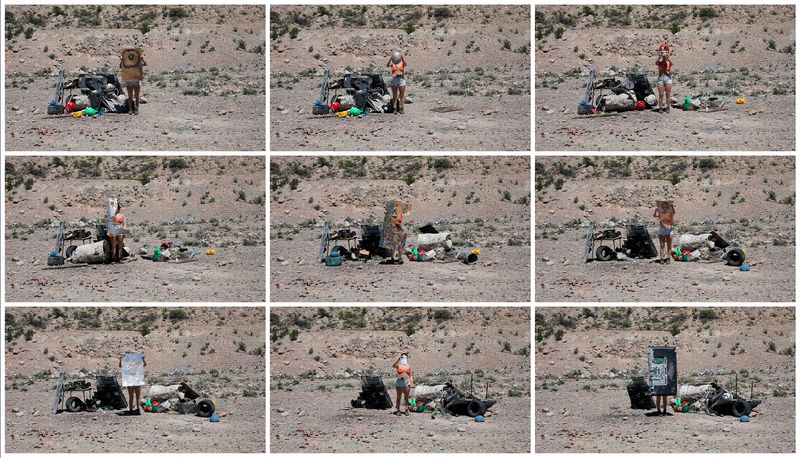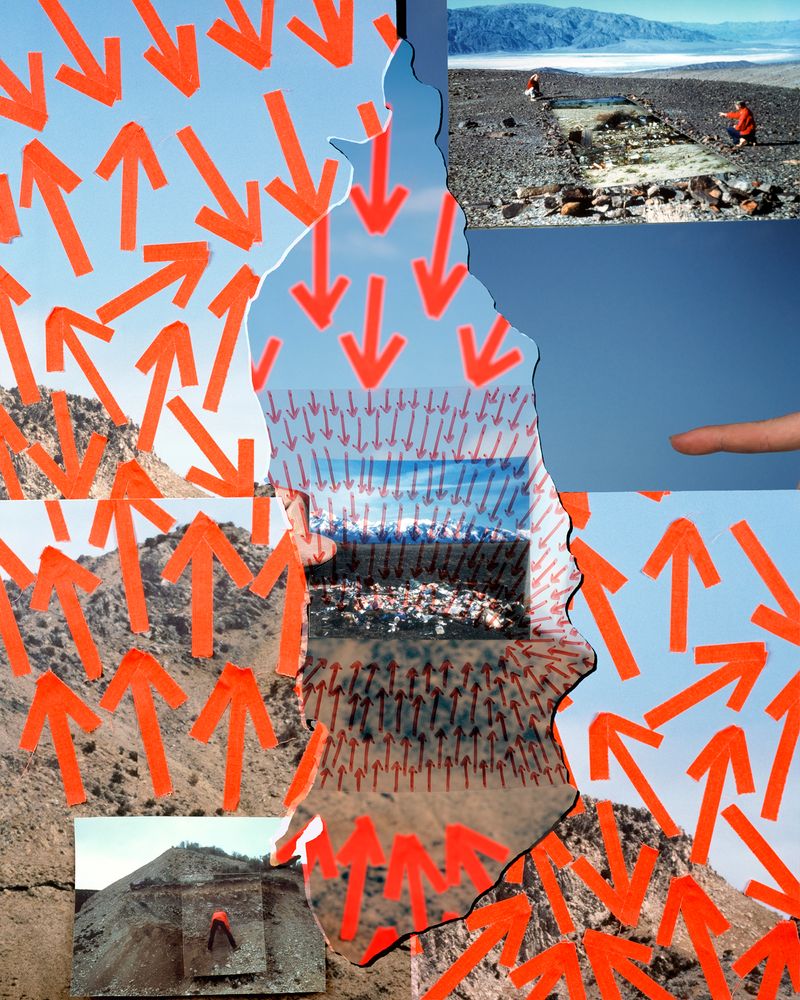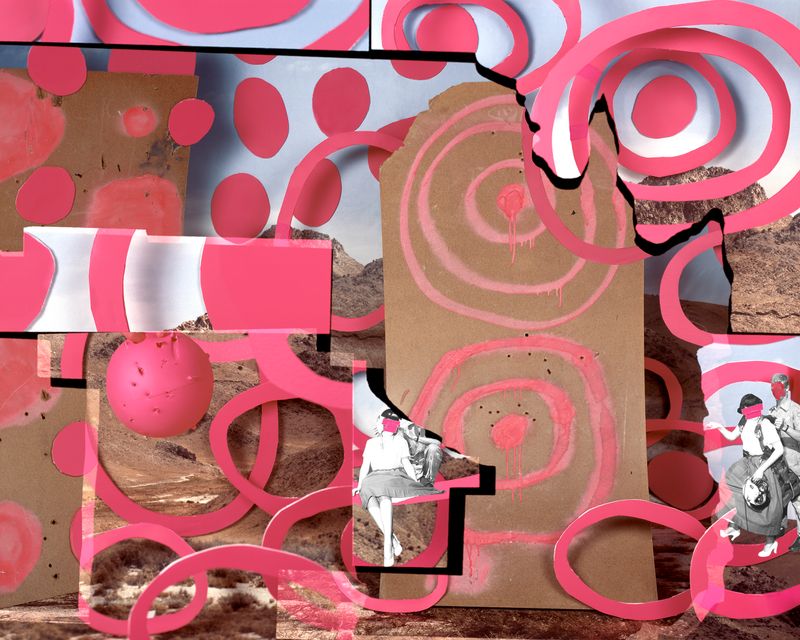High Visibility (Blaze Orange)
-
Dates2021 - Ongoing
-
Author
- Location Salt Lake City, United States
-
Recognition
-
Recognition
High Visibility (Blaze Orange) uses debris collected from improvised gun ranges on public lands to create photographic installations that explore the impacts and material traces of late capitalism and settler colonialism on the landscape of the U.S. West.
High Visibility (Blaze Orange) uses debris collected from improvised gun ranges on public lands to create photographic installations that explore the impacts and material traces of late capitalism and settler colonialism on the landscape of the U.S. West. Through the use of original images, archival photographs and maps, and performances, the work shows the crucial role photography plays in codifying land use. The work explores how these codes manifest themselves in behaviors observed in Utah's West Desert.
Much of the West Desert, the ancestral home of the Goshute people, is managed by the Bureau of Land Management (BLM). It is classified by the U.S. Government as "public lands." While the term "public" implies land open to all use, significant acreage is privately leased for mining and cattle ranching. The West Desert is located on the western side of the Great Salt Lake. The Great Salt Lake is rapidly drying up due to drought, population growth, and water diversion for agriculture. The leasing of public land, capitalist water use, and human-caused ecological change are linked to the drying of the Great Salt Lake, threatening millions of migratory birds and those who live in Salt Lake City.
Nearly one-third of the West Desert's 7.7 million acres are used as biological and chemical weapons testing grounds. The remaining areas of the West Desert are open to various uses, including improvised gun ranges. I see this land use as rooted in settler colonial, patriarchal, and capitalist systems that perpetuate ideologies undermining egalitarianism and environmentalism's goals.
The work incorporates the color of the most conspicuous type of debris found in the West Desert on these ranges—blaze orange clay pigeons. These aerial targets are painted a highly saturated and synthetic orange, "blaze orange,"to ensure they stand out against the sky on a clear day. The contrast produced between these complementary colors enables shooters to track the unnatural target more easily against the natural landscape. I am interested in the unequivocal struggle between the natural world and its codification by bureaucrats, the visible and invisible, and the inherent ironies of playing out fantasies of freedom and nativism on stolen land.
